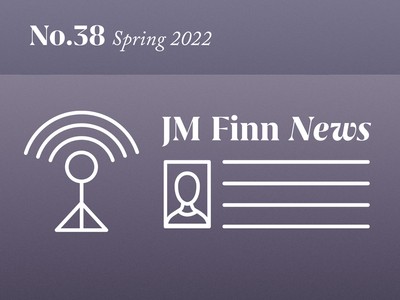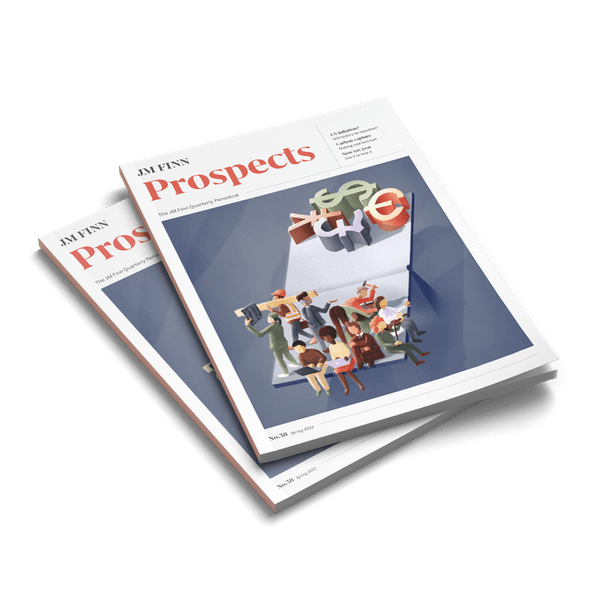Our asset allocation committee is one example of this, via their monthly output showcasing their views on a global basis; this is then complemented by a sectoral view from the stock selection committee. The combination of these top down and bottom up opinions is an important resource for our investment managers to validate their own investment theses or to generate new investment ideas.
These committees, which consist of members of our research team and a number of investment managers, aim to provide a view that seems most suitable in the current climate. The output of the monthly meetings remains a suggested stance and it is important to note, that the views expressed are those of the committees and may not necessarily be those of your individual investment manager.
Here we present a snapshot of the current views.
SECTOR VIEWS
|
Materials |
Hard commodity markets have shown resilience since 2020 helped by demand from China. Drivers include sustained high commodity prices and the growth-to-value rotation. Long term, this is a sector in flux from the more traditional commodities to the new green economy commodities. |
|
Consumer |
Longer term we favour e-commerce names and those businesses further along their digital transformation journeys. |
|
Consumer |
We like the sector for its high quality businesses and resilience. Although valuations do not look stretched, they are not cheap, and the sector is vulnerable to rising input cost inflation, which has historically squeezed gross margins. |
|
Diversified Financials |
Many names are high quality but valuations are not at a level to turn more positive. |
|
Financials |
We see rate rises and tighter monetary policy in the near future as inflation continues to surprise on the upside as we detect evidence that wage inflation may follow CPI inflation. UK listed banks now represent good value and see more near term upside versus US banks. |
|
Financials |
Life insurance companies benefit from the steepening yield curve. Higher rates drive liabilities lower and increase prospective investment returns. A key challenge is a lack of growth for those without exposure to Asia. |
|
Real Estate |
Global real estate may offer better value than other fixed income instruments but caution on bond proxy status in a rising rate environment. |
|
Health Care |
A sector with growth and defensive attributes thanks to demographic tailwinds and resilience of global healthcare spend. We favour companies which have been negatively effected by the pandemic i.e. elective surgery, which still offer reasonable valuations and encouraging long-term outlooks. |
|
Industrials |
We continue to see increasing evidence that global industrial production is improving and see this broadening further as we exit the pandemic period. |
|
Energy |
In the medium term oil demand forecasted to exceed pre-COVID levels by the end of 2022, which could create an environment for sustained elevated prices. The sector remains structurally under pressure due to environmental concerns. |
|
Information Technology |
We like the structural tailwinds supporting the sector. We would return to a positive view should bond yields stabilise. We favour more cyclically exposed names that are likely to benefit more as the economy unlocks. |
|
Communication Services |
Changed behaviours should persist, but we do see tough earnings comparisons against exceptionally strong 2021 numbers. Digital advertising names do have cyclical upside potential as a strengthening economy and lockdown easings are expected to support a revival in marketing activity. We continue to avoid more traditional telcos. |
|
Utilities |
Sector has some safe haven support, however it is not immune from the slowdown as business customers suffer. |
UK EQUITIES
|
UK |
The market still looks relatively cheap on a PE basis. The relative over-representation of financials, banks and oils has helped the index. Banks do better in a rising rate environment as their net interest margin expands. With more rate hikes on their way and talk of higher oil prices, we expect the UK to do well. These positives, including tax hikes indicating a fiscally responsible attitude, beat the negatives of low ESG scores, risks from runaway inflation, Brexit legacies, Scottish devolution and political leadership. |
INTERNATIONAL EQUITIES
|
North America |
The US is relatively overweight “long duration” tech and growth which is why the market has reacted negatively to interest rate hikes. When we look at the de-rating implications of more rate hikes and the effect of inflation we think the US market will under-perform this year but rise to deliver strong performance in 2023. |
|
|
Europe |
The Eurozone’s €750 billion support package is supportive of growth as is our expectation for relatively lower interest rate increases. Europe’s periphery could struggle with higher rates and could trigger problems for banks with too much national debt on their balance sheets. However, with relatively restrained expectations for interest rate rises, low inventories and a rebound in China’s prospects in H2 of this year, we think Europe will shine in 2022. |
|
|
Japan |
Japan’s recovery has been weak but this has meant less of an inflation issue. The latest CPI was -0.8%. The Yen always has the potential for reverting to safe harbour mode if real yields fall in other countries. Although the new PM indicates more stimulus he now seems to be carrying a focus on redistribution China should stimulate in H2 which would be supportive for Japan. |
|
|
Asia Pacific |
China seems to be managing the property crisis well by balancing punishing over-exuberant property financing with the need to prevent a property market crash. We expect modest loosening to feed through to the economy by late summer of this year and then for growth in corporate earnings at which time we will upgrade. We are looking for China to relax their zero tolerance policy. Whilst South Korea and Taiwan should benefit from the surplus of semiconductor chip demand, the main impact on the region will come from China. |
|
|
Emerging Markets |
We still have a preference for China and others with a history of sound macro-economic policies, such as South Korea, and Mexico. The near term risk is focused on Latin America until China reflates. EM central banks face a dilemma of whether to cut rates to boost their economies, or raise rates to protect their currencies. Inflation, weak currencies and higher rates are a worry as is Argentina’s debt negotiations with the IMF. |
BONDS
|
Conventional |
The prospect of inflation, driven by the temporary impact of base effects and demand being fed into a sub-optimal supply chain continues to be a concern. |
|
|
Corporate |
Given our overweight equity position, we would prefer to be underweight as spreads are widening and should continue to do so, driven by investor sentiment. |
|
|
Index Linked |
Pricey but necessary inflation hedge. Positives: Hedge against inflation increasing from loose monetary and a compromised supply chain. Negatives: Expensive negative yield curve in the UK. |
CASH
|
Cash |
Cash has a poor yield but keep some on the side-lines for a possible pullback. |
PROPERTY
|
Property |
Real estate lies somewhere between equity and bonds but with a built-in and attractive natural inflation hedge. |
ALTERNATIVES
|
Alternatives |
The uncertainty that surrounds the direction of inflation leads us to overweight this sector. We like infrastructure and, to a lesser degree, gold as diversifiers. |



